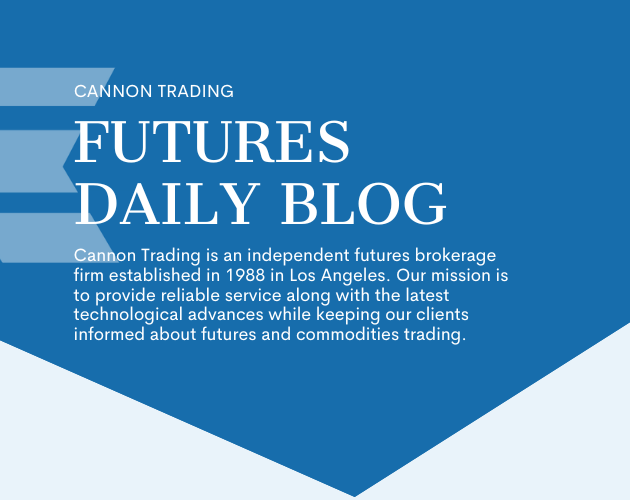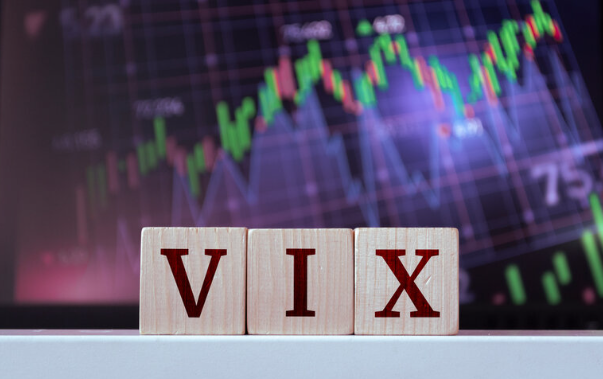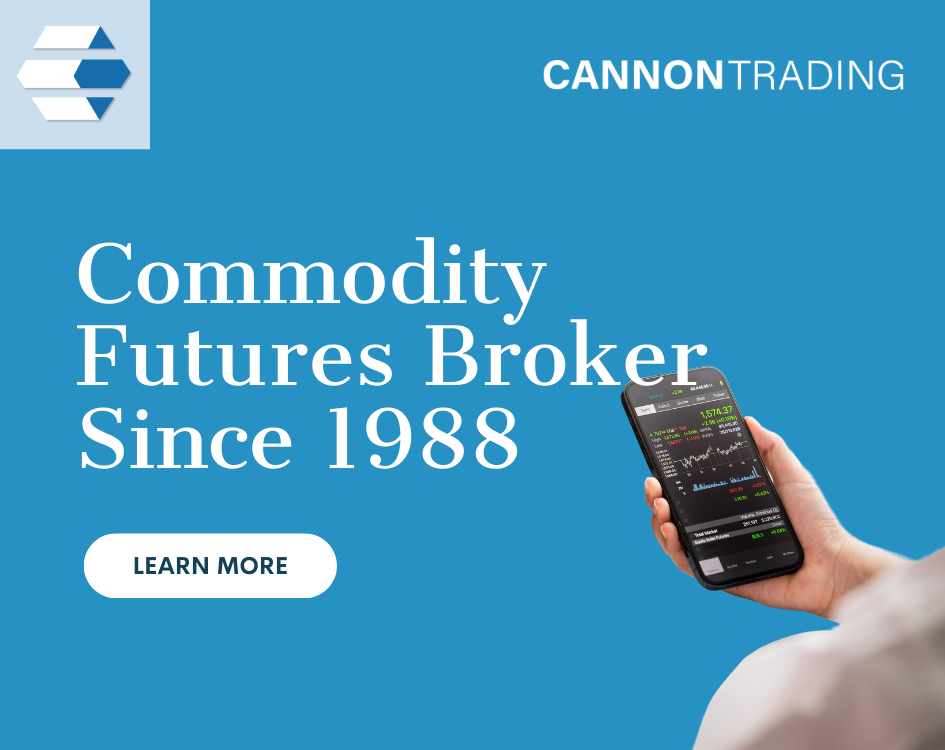
Trading Day Full of Reports Ahead!

|
||||||||||||||||||||||||||||||||||||||||||||||||||||||||||||||
|
||||||||||||||||||||||||||||||||||||||||||||||||||||||||||||||
|
This Blog provides futures market outlook for different commodities and futures trading markets, mostly stock index futures, as well as support and resistance levels for Crude Oil futures, Gold futures, Euro currency and others. At times the daily trading blog will include educational information about different aspects of commodity and futures trading.


|
||||||||||||||||||||||||||||||||||||||||||||||||||||||||||||||
|
||||||||||||||||||||||||||||||||||||||||||||||||||||||||||||||
|
When consumers search for the best futures broker on Trustpilot, they’re typically drawn to firms exhibiting:
A broker with even one of these strengths may be considered “good,” but the best futures broker combines all of them—an achievement reflected in both user sentiment and platform ratings on Trustpilot.
Trustpilot has evolved over decades (founded in 2007) into a trusted global review platform. Its credibility stems from:
As a result, Trustpilot is consistently consulted by traders researching brokers: search terms like “best futures broker Trustpilot”, or “futures broker Trustpilot”, yield Cannon Trading among top results.
By analyzing top-rated brokers, including Cannon Trading, we identify several repeating themes:

Cannon Trading Company doesn’t just mirror these traits—they live them in day to day operations.
A) Trustpilot Excellence: 5 Star TrustScore & Reviews

B) Decades of Futures Industry Experience
C) Regulatory Strength & Reputation
D) Client-Centric Responsiveness
E) Simple and Efficient Onboarding
F) High Technical Competence
G) Personalized Broker Relationships
H) Robust Platform Offering: Including CannonX powered by CQG
CannonX powered by CQG brings together:
Customers highlight that personal brokers are there to walk them through setup, reinforcing that technology is powerful yet user-friendly when backed by human expertise.
The company’s tone on Trustpilot and its own materials reflects:
Bringing it all together:
| Key Quality | Cannon Trading Evidence |
| High TrustScore | 4.9–5.0 from 525+ 5-star reviews |
| Quick & personalized service | Reviews mention Ilan, Kimberly, Joe, Mark, etc. |
| Decades of experience | Founded 1988, >35 years |
| Regulation & trust | NFA, CFTC, BBB |
| Diverse platforms | Free platforms, CannonX powered by CQG |
| Tech-savvy with problem resolution | Reviews on troubleshooting |
| Smooth account setup | “Easy to set up” |
By consistently delivering across key categories associated with “best futures broker” on Trustpilot, Cannon Trading not only meets expectations—but is repeatedly confirmed by clients as a top-tier choice.
Interspersed Direct Quotes from Trustpilot (≥5 Examples)
For any trader querying “best futures broker Trustpilot”, the evidence suggests that Cannon Trading Company stands out. With numerous 5-star Trustpilot ratings, decades of experience in futures trading, stable regulatory standing, dedicated client service, and wide platform access—particularly via CannonX powered by CQG—they embody what top brokers promise and what users demand. Their performance, as reflected in reviews from real traders, validates the label of best futures broker.
Ready to start trading futures? Call us at 1(800)454-9572 (US) or (310)859-9572 (International), or email info@cannontrading.com to speak with one of our experienced, Series-3 licensed futures brokers and begin your futures trading journey with Cannon Trading Company today.
Disclaimer: Trading Futures, Options on Futures, and retail off-exchange foreign currency transactions involve substantial risk of loss and are not suitable for all investors. Past performance is not indicative of future results. Carefully consider if trading is suitable for you in light of your circumstances, knowledge, and financial resources. You may lose all or more of your initial investment. Opinions, market data, and recommendations are subject to change at any time.
Important: Trading commodity futures and options involves a substantial risk of loss. The recommendations contained in this article are opinions only and do not guarantee any profits. This article is for educational purposes. Past performances are not necessarily indicative of future results.
This article has been generated with the help of AI Technology and modified for accuracy and compliance.
Follow us on all socials: @cannontrading


|
|||||||||||||||||||||||||||||||||||||||||||||||||||||||||||||||||||
|
|||||||||||||||||||||||||||||||||||||||||||||||||||||||||||||||||||
|



|
|
|
In the dynamic and fast-paced world of futures trading, the role of a futures broker has evolved from a traditional order-taker to a strategic partner, technology provider, and regulatory liaison. As we head into the second half of 2025, futures brokers are more vital than ever—offering clients unparalleled access to cutting-edge platforms, deep market insights, personalized trading support, and robust regulatory frameworks. Among the top-tier firms in the industry, Cannon Trading Company has distinguished itself as the best futures broker for both new and experienced traders, earning numerous 5 out of 5-star ratings on TrustPilot and maintaining an exemplary record with federal and industry regulators.
The concept of the futures broker emerged in the 19th century, most prominently with the establishment of the Chicago Board of Trade (CBOT) in 1848. Initially, brokers served as intermediaries who matched buyers and sellers of grain contracts. Their role was transactional, with minimal strategic input. Traders would rely on handwritten order tickets, face-to-face open outcry systems, and brokers’ personal networks to execute trades.
As global markets developed and futures contracts expanded beyond agriculture to include commodities like crude oil, metals, interest rates, and eventually financial instruments such as indices and currencies, the futures broker evolved into a more sophisticated participant. During the 1970s and 1980s, the rise of electronic trading platforms started to reshape the industry, gradually phasing out the traditional open outcry method and introducing digital tools that allowed faster execution and greater transparency.
By the early 2000s, the modern futures trading ecosystem had become digitally native. Brokers transitioned into tech-savvy facilitators who not only processed orders but also provided clients with market data, charting software, back-testing tools, and compliance guidance. The COVID-19 pandemic in 2020 further accelerated this digital transformation, reinforcing the need for seamless, remote, and real-time access to futures contract trading.
As we enter the second half of 2025, the needs of traders have grown increasingly sophisticated. Today’s futures broker is no longer a passive executor but a comprehensive service provider. Here’s how top futures brokers empower clients to thrive in this environment:
Throughout history, certain market conditions have significantly elevated the value of experienced futures brokers. These periods include:

Cannon Trading Company has emerged as a top best futures broker for a reason. Let’s explore what makes this firm the premier partner for traders as we move through the second half of 2025:
 Reputation matters. With numerous “5 out of 5-star” reviews on TrustPilot, Cannon Trading has established itself as the best futures broker TrustPilot can recommend. These ratings speak to the company’s customer service, technical support, and overall reliability. Traders who partner with Cannon know they are in good hands.
Reputation matters. With numerous “5 out of 5-star” reviews on TrustPilot, Cannon Trading has established itself as the best futures broker TrustPilot can recommend. These ratings speak to the company’s customer service, technical support, and overall reliability. Traders who partner with Cannon know they are in good hands.As we look toward Q3 and Q4 of 2025, economic uncertainty remains high. Central banks are debating rate cuts or pauses, inflation lingers in certain global regions, and geopolitical events continue to inject risk into the markets. Against this backdrop, working with a futures broker who offers stability, foresight, and advanced tools is critical.
Cannon Trading Company is uniquely positioned to provide that support. Through its CannonX powered by CQG suite, real-time guidance, and top-tier customer service, the firm ensures traders are not just reacting to the market—but anticipating it.
The need for a strong brokerage partner has never been clearer. Whether navigating futures contract trading in energy markets, metals, indices, or agricultural products, Cannon provides the support structure necessary to excel.
The business of futures brokers has transformed dramatically from its origins in physical trading pits to today’s sophisticated, digital-first landscape. In 2025, the best futures broker is not just a middleman but a strategic partner—providing tools, insights, education, and compliance assurance. This is where Cannon Trading Company excels.
With decades of experience, elite TrustPilot reviews, and standout tools like CannonX powered by CQG, Cannon is a logical choice for anyone serious about futures trading. As volatility persists and market opportunities evolve, Cannon remains a steadfast ally for those trading futures in pursuit of precision, performance, and profitability.
Ready to start trading futures? Call us at 1(800)454-9572 (US) or (310)859-9572 (International), or email info@cannontrading.com to speak with one of our experienced, Series-3 licensed futures brokers and begin your futures trading journey with Cannon Trading Company today.
Disclaimer: Trading Futures, Options on Futures, and retail off-exchange foreign currency transactions involve substantial risk of loss and are not suitable for all investors. Past performance is not indicative of future results. Carefully consider if trading is suitable for you in light of your circumstances, knowledge, and financial resources. You may lose all or more of your initial investment. Opinions, market data, and recommendations are subject to change at any time.
Important: Trading commodity futures and options involves a substantial risk of loss. The recommendations contained in this article are opinions only and do not guarantee any profits. This article is for educational purposes. Past performances are not necessarily indicative of future results.
This article has been generated with the help of AI Technology and modified for accuracy and compliance.
Follow us on all socials: @cannontrading


|
||||||||||||||||||||||||||||||||||||||||||||||||||||||||||||||||
|
||||||||||||||||||||||||||||||||||||||||||||||||||||||||||||||||
|
In the high-stakes, fast-paced world of futures trading, choosing the best futures broker can significantly impact a trader’s trading. The futures broker serves not only as a gateway to the markets but also as a partner in the pursuit of profit and risk management. While many firms compete for the title of best futures broker, few consistently rise above the rest in all aspects that matter—reliability, transparency, platform selection, regulatory compliance, and personalized service.
Among these top-tier firms stands Cannon Trading Company, a brokerage with decades of experience and an unwavering commitment to client satisfaction. With its exemplary reputation, broad suite of trading platforms—including CannonX powered by CQG—and a long list of glowing reviews, Cannon Trading Company has earned its place as one of the most respected and trusted names in futures trading.
Not all brokers are created equal. Here are the defining qualities that distinguish the best futures broker from the rest:

Cannon Trading Company doesn’t just meet the above standards—it exceeds them. Let’s explore how this futures broker personifies the qualities that define the best futures broker in the industry.
Founded in 1988, Cannon Trading has spent over three decades honing its expertise in the futures trading industry. This longevity isn’t accidental—it’s a reflection of adaptability, professionalism, and a relentless commitment to clients’ evolving needs.
Cannon Trading is a member of the National Futures Association (NFA) and is registered with the Commodity Futures Trading Commission (CFTC). These affiliations guarantee regulatory oversight, client fund segregation, and adherence to the highest industry standards—hallmarks of the best futures broker.
Few brokers offer a broader or more robust selection of platforms than Cannon. Their flagship offering, CannonX powered by CQG, stands out as a premier choice for serious traders. The CQG platform is known industry-wide for its speed, reliability, and professional-grade analytics. By integrating this into their CannonX product, Cannon delivers institutional-quality tools to retail and professional clients alike.
Other platforms offered include:
This expansive offering ensures every trader can find the ideal futures trading environment, whether focused on discretionary trading futures, algorithmic strategies, or futures contract trading.
What truly differentiates Cannon is its deeply personalized service. This is not a faceless brokerage. Clients regularly speak directly with senior brokers and benefit from decades of cumulative industry experience. Education, platform training, and strategy discussions are part of the service—not upsells.
As one TrustPilot reviewer stated:
“They always take the time to walk me through my questions, no matter how busy they are. That kind of service is unheard of these days.”
Another 5-star review reads:
“Cannon Trading provides professional, personalized service that is tailored to my trading style. They genuinely care about my success.”
These quotes embody the human element that defines the best futures broker—real relationships, not just transactions.
Cannon Trading’s TrustPilot page is a testament to client satisfaction. With numerous 5 out of 5-star ratings, the brokerage clearly delivers on its promises. Importantly, these reviews come from real traders sharing their real experiences.
Here are just a few glowing examples (all 5-star ratings):
These reviews not only reinforce Cannon’s reputation—they make a compelling case for why Cannon Trading is among the top contenders for best futures broker TrustPilot searches.
Cannon Trading excels in clarity. Whether you’re opening a basic self-directed account or engaging a full-service broker, the pricing structure is easy to understand and competitive. Clients aren’t bombarded with hidden fees, vague margins, or complex fine print.
Moreover, Cannon provides a wealth of educational materials—daily market commentary, webinars, platform tutorials, and newsletters—all designed to empower clients to make informed decisions in their futures trading journey.
The CannonX powered by CQG platform deserves special attention. By integrating the robust CQG platform into its infrastructure, Cannon Trading gives clients access to:
Whether for scalping, swing trading, or longer-term strategies, CannonX provides everything a trader needs to engage in professional-grade futures contract trading.
To summarize, here’s how Cannon checks every box:
| Broker Attribute | Cannon Trading Company |
| Regulatory Trustworthiness | CFTC & NFA Registered, Clean Record |
| Platform Variety | 15+ Platforms Including CannonX powered by CQG |
| Client Support | Personalized, Experienced, 24/7 Accessibility |
| Technology & Execution | CQG Backbone, High-Speed Data, Low Latency |
| Pricing Transparency | Clear Commission Structures, No Hidden Fees |
| Client Feedback | Dozens of 5-Star TrustPilot Reviews |
| Education & Resources | Webinars, Daily Market Reports, Platform Guides |
The world of futures trading is complex and challenging—but with the right broker, it doesn’t have to be intimidating. Cannon Trading Company exemplifies every trait that defines the best futures broker today. With its comprehensive platform options, transparent business practices, professional support, and glowing TrustPilot reviews, it’s clear why many traders refer to Cannon as their long-term partner in trading futures.
In an industry often marred by overpromises and underdelivery, Cannon Trading offers a refreshing alternative: integrity, reliability, and cutting-edge tools like CannonX powered by CQG. Whether you’re a new trader exploring futures contract trading or a seasoned professional seeking a reliable edge, Cannon Trading is the kind of futures broker that delivers service at a level only a legacy futures broker can provide.
Ready to start trading futures? Call us at 1(800)454-9572 (US) or (310)859-9572 (International), or email info@cannontrading.com to speak with one of our experienced, Series-3 licensed futures brokers and begin your futures trading journey with Cannon Trading Company today.
Disclaimer: Trading Futures, Options on Futures, and retail off-exchange foreign currency transactions involve substantial risk of loss and are not suitable for all investors. Past performance is not indicative of future results. Carefully consider if trading is suitable for you in light of your circumstances, knowledge, and financial resources. You may lose all or more of your initial investment. Opinions, market data, and recommendations are subject to change at any time.
Important: Trading commodity futures and options involves a substantial risk of loss. The recommendations contained in this article are opinions only and do not guarantee any profits. This article is for educational purposes. Past performances are not necessarily indicative of future results.
This article has been generated with the help of AI Technology and modified for accuracy and compliance.
Follow us on all socials: @cannontrading

|
||||||||||||||||||||||||||||||||||||||||||||||||||||||||||||||||||||||||||||||||||||||||||||||||
|
||||||||||||||||||||||||||||||||||||||||||||||||||||||||||||||||||||||||||||||||||||||||||||||||
|

|
||||||||||||||||||||||||||||||||||||||||||||||||||||||||||||||||
|
||||||||||||||||||||||||||||||||||||||||||||||||||||||||||||||||
|
The world of futures trading continues to evolve rapidly. Technological innovation and the need for robust reliable tools are at the center of needs for industrial and retail traders. One of the leading solutions to emerge in recent years is the Quantower trading platform. Quantower is a dynamic, multi-asset interface that has positioned itself as a top-tier futures trading platform. From its intuitive design and advanced charting capabilities to its seamless integrations with data feeds and brokers, Quantower is redefining how futures traders approach the markets.
Launched in 2017, the Quantower trading platform was conceived to address the limitations and pain points found in many legacy futures platforms. Developed by a team of experienced software engineers and market professionals, Quantower’s mission was clear: create a modern, flexible, and powerful trading interface capable of catering to a broad range of traders, from beginners to institutional investors.
Since its inception, the quantower futures platform has been accessible to brokers and traders worldwide. Its rapid adoption across various financial markets is a testament to its innovative features, reliability, and user-centric design. Over the years, Quantower has established partnerships with numerous data vendors, brokers, and execution providers, making it one of the most versatile futures trading tools in the industry today.
The Quantower trading platform distinguishes itself through a combination of high-end professional features, remarkable modularity, and a commitment to continuous development. Unlike many traditional futures platforms, which often lock traders into rigid layouts or proprietary brokerage ecosystems, Quantower embraces customization and openness.
Efficient trade execution is a cornerstone of success in futures trading. Quantower excels in this domain with features designed to eliminate latency, maximize precision, and streamline the user experience.

While the Quantower trading platform offers cutting-edge technology, partnering with the right broker is crucial for unlocking its full potential. Cannon Trading Company stands out as a premier partner for those seeking excellence in futures trading.
The demands of modern futures trading require a combination of sophisticated technology and reliable brokerage support. The Quantower trading platform meets this challenge with flying colors, offering a best-in-class solution that competes with legacy institutional trading platforms. When combined with Cannon Trading Company’s proven track record, regulatory reliability, and exceptional client service, traders are equipped with everything they need to navigate the futures markets with confidence. The synergy between Quantower’s powerful toolset and Cannon’s robust brokerage infrastructure creates a future-ready solution that excels in execution, analytics, and risk control.
Whether you’re a retail trader exploring new strategies or a professional trading desk seeking powerful tools, the combination of the Quantower trading platform and Cannon Trading Company represents one of the best opportunities available in the futures space today.
In an increasingly competitive landscape, traders need platforms and partners that empower rather than limit. The Quantower futures platform delivers the performance, flexibility, and analytics expected from a modern futures trading platform, while Cannon Trading Company brings decades of trust, customization, and client focus. Together, they offer a powerful pathway for succeeding in Trading Futures.- NICE ONE!
Ready to start trading futures? Call us at 1(800)454-9572 (US) or (310)859-9572 (International), or email info@cannontrading.com to speak with one of our experienced, Series-3 licensed futures brokers and begin your futures trading journey with Cannon Trading Company today.
Disclaimer: Trading Futures, Options on Futures, and retail off-exchange foreign currency transactions involve substantial risk of loss and are not suitable for all investors. Past performance is not indicative of future results. Carefully consider if trading is suitable for you in light of your circumstances, knowledge, and financial resources. You may lose all or more of your initial investment. Opinions, market data, and recommendations are subject to change at any time.
Important: Trading commodity futures and options involves a substantial risk of loss. The recommendations contained in this article are opinions only and do not guarantee any profits. This article is for educational purposes. Past performances are not necessarily indicative of future results.
This article has been generated with the help of AI Technology and modified for accuracy and compliance.
Follow us on all socials: @cannontrading